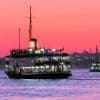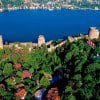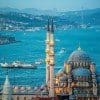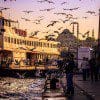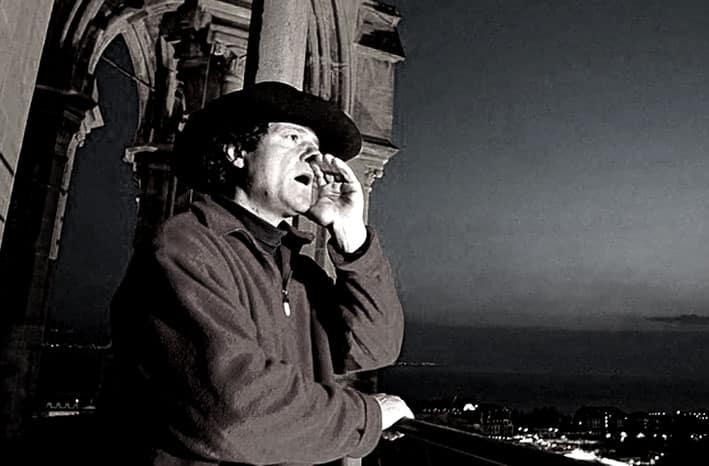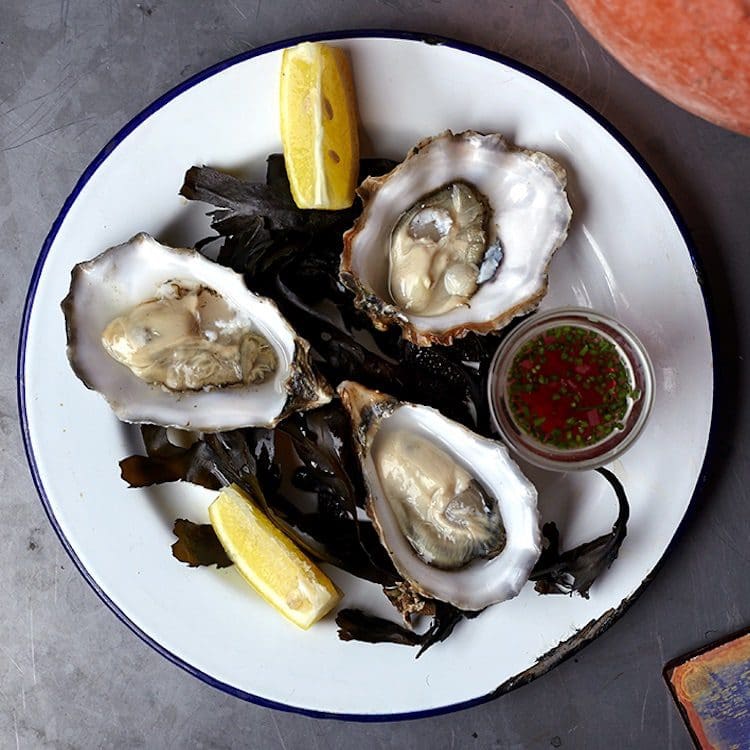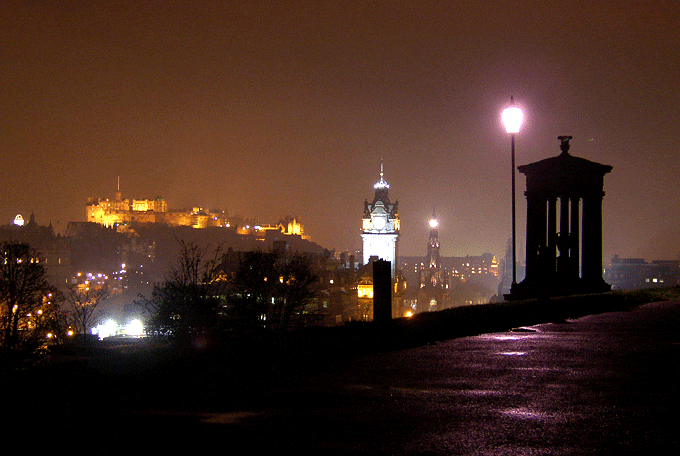Escape Istanbul’s crowds on a vintage Bosphorus ferry – words Neil Geraghty
When you’ve been stuck in a traffic jam for two and a half hours, there is only a certain number of motorway verge bedding plant displays you can endure.
I’m sitting on the airport shuttle bus travelling from Sabiha Gökçen airport to the centre of İstanbul and the journey has lasted almost as long as the flight. Rush hour gridlocks are notorious in İstanbul and in all fairness the city council has done a terrific job in relieving the boredom with their exuberant flower displays. Tens of thousands of begonias and busy lizzies planted in swirling Ottoman patterns provide soothing distractions from the interminable traffic. They are also strangely hypnotic to look at – at least half the bus has nodded off, hands still clutching smartphones pinging with shunned social media updates.
As we descend a hill, a flurry of excitement sweeps over the bus. We’re approaching the Fatih Sultan Mehmet Bridge, a colossal one-and-a-half kilometre suspension bridge that towers over the Bosphorus Strait linking Asia to Europe. As if by magic, the traffic starts flowing again, and a setting sun appears like a sinking fireball between the skyscrapers of Istanbul’s distant business district. Below us, the Bosphorus stretches out in a magnificent burnished ribbon flanked by thickly wooded promontories and sleepy coves. Adjacent to the bridge on the European side, the mighty Rumeli Hisarı castle, built by Mehmet the Conqueror in 1451, towers over the sea. It was from here in April 1453 that the young Sultan hauled the Ottoman naval fleet over the hills to the Golden Horn, took Constantinople by surprise and delivered the death knell to the Byzantine Empire. By now the bus windows are a wall of photo clicking smartphones and the mood has instantly lifted. For native İstanbullus the Bosphorus encapsulates all the magic of their remarkable city and it suddenly feels good to be home.
For a teeming megalopolis of over 14 million people, İstanbul is surprisingly devoid of parks and it is the Bosphorus that provides the city’s much needed fresh air and recreational spaces. My visit coincides with a baking summer heat wave. The following afternoon I find myself slumped with exhaustion on the quayside of the Golden Horn close to Eminönü’s busy Istanbul ferry terminals. The wharfs were once famous for their fishermen who tethered tiny dinghies to the bulwarks, lit portable barbeques and rustled up delicious char grilled fish sandwiches for commuters. It was a risky business and the wash from the huge passenger ferries often knocked the hapless fishermen overboard. Health and safety is never taken too seriously in Turkey but in the end the fishermen had to go for their own safety. Nowadays,ornate red and white kiosks dot the quayside and some continue the fish sandwich tradition. Good news for the flocks of hungry seagulls that still swoop low over the wharfs, squawking loudly in their search for scraps.
To cool down, I decide to hop on a ferry over the Bosphorus. Alongside Hong Kong’s Star Ferry, Venice’s Grand Canal Vaporetto and New York’s Staten Island Ferry, the Bosphorus Ferry is one of the world’s great scenic ferry rides and at only 50p is certainly the cheapest. Built by Glasgow’s Fairfield Shipbuilding company in the 1950s, the graceful streamlined ferries with their handsome green and white liveries, jaunty yellow funnels and spacious outdoor decks are deeply loved by İstanbullus; so much so that when a strange new design was unveiled last year it went down like a lead balloon. With their ungainly rectangular shape, smoked glass windows and odd triangular bridges topped by arabesque shaped radars, they were instantly lampooned and nicknamed floating mosques by secular minded İstanbullus. The main problem is their lack of outdoor seating which is the great joy of Bosphorus ferry rides. Fortunately for the locals, a design fault has stopped their production and like the new Routemaster busses in London, an updated version of the much loved Fairfax model is now being introduced.
A new ferry begins boarding, but like many other passengers I bide my time until a vintage one arrives 20 minutes later. Prior to departure there is an unseemly scrum in the departure hall as passengers jostle for pole position to nab the best seats. When the doors open I sprint across the wharf, ignore the gang plank queue and jump straight onto the ship. Once aboard I race upstairs to the outdoor deck and lay claim to a backwards facing left hand seat by the railings. Here, I’m guaranteed the best views of the Old City.
An elderly waiter appears holding a silver tray arranged with a dozen tulip shaped glasses of steaming amber coloured black tea. However hot it is in İstanbul these strong brews with their aromatic toffee aroma are instantly refreshing. Millions of glasses are downed in Istanbul every day and the çaycis, the tea waiters who roam İstanbul’s streets. are often the life and soul of neighbourhood communities. The very act of carefully holding a hot tea glass without burning your fingers forces you to slow down and unwind, a priceless gift in this maelstrom of a city.
With a judder and a whoosh of churning water the ferry pushes out and refreshing winds begin buffeting my face. The Bosphorus is well known for its capricious winds and the sardine fishermen who ply the straits in their ramshackle boats still refer to them by their poetic Ottoman names. Violent summer storms preceded by flocks of fleeing birds are known as karakuş fırtanası or blackbird storms while the cold winter north easterlies are called poyraz, named after Boreas, the Greek God of the North Wind. In little over a minute the full view of Istanbul’s fabled Old City comes into view, the graceful domes and minarets of the Aghia Sophia and Blue Mosque towering majestically over the higgledy piggledy pavilions of the Topkapı Palace.
Turning into the Bosphorus we sail past the Domabahçe Sarayı an elegant 19th Century neo classical palace built by Sultan Abdülmecid I when, in his drive to modernise the Ottoman Empire, he decided that the Topkapı was too old fashioned. Swinging right we plough into the busy shipping lanes and approach a giant Russian container ship speeding down the Bosphorus at full throttle. İstanbul’s ferry captains seem to relish these thrilling close encounters and we hold our breath as the tankers hulking prow glides past causing our ferry to list back and forth in its wake.
We arrive in Üsküdar, our final destination, but there is a palpable sense of unease as the giant ropes are cast ashore to secure the ship. Urban myths abound in İstanbul of these ropes snapping under the strain and whiplashing backwards to decapitate unlucky passengers. It’s doubtful whether this has ever happened but nevertheless, the passengers keep a respectful distance. For tourists crossing the Bosphorus, there’s always a thrill as you step ashore in Asia but as the snobbish residents living on the European side never fail to point out, it’s the view of the Old City in Europe that is the only reason to visit Üsküdar.
This is unkind – Üsküdar is home to a fine collection of beautiful Ottoman mosques, a colourful bazaar and some excellent seaside restaurants. From the ferry terminal I walk along the promenade past dozens of fishermen standing by buckets of freshly caught sardines. A long line of coloured balloons lies bobbing up and down in the waves and a couple of men are taking pot shots at them with an air rifle, a popular past time along the Bosphorus. At a promontory opposite a rocky islet, where the whimsical 18th Century Maidens Tower of James Bond fame lies, I sit down in a tea garden and enjoy the cool summer breeze wafting down from the Black Sea. The heat, crowds and traffic seem a million miles away, and as I sit sipping another glass of tea I watch the old ferry chugging back across the Bosphorus to the Old City, a flock of seagulls circling in its wake.
Escape Istanbul’s crowds on a vintage Bosphorus ferry – words Neil Geraghty
Fact Box:
Pegasus Airlines operates twice daily flights from London Stansted and daily flights from London Gatwick to İstanbul and beyond.
One way flights to İstanbul Sabiha Gökçen start from £54.02 including taxes and charges.
Visit www.flypgs.com/en for detailed information and travel services including seat selection, online check-in, extra baggage allowance, in-flight meal choices, hotel bookings, car hire and airport transfers.
Cloud 7 Hotel is an innovative hi-tech hotel featuring complimentary high speed wifi Bluetooth shower speakers, in room mobiles, keyless mobile room entry and 24 hour WhatsApp access to the Cloud 7 team. With architecture and design based on sustainability and locality the stylish rooms have been designed using furniture, lighting and stonework sourced from local designers and artists. Prices start at £45 per night. Visit www.cloud7hotels.com to book


